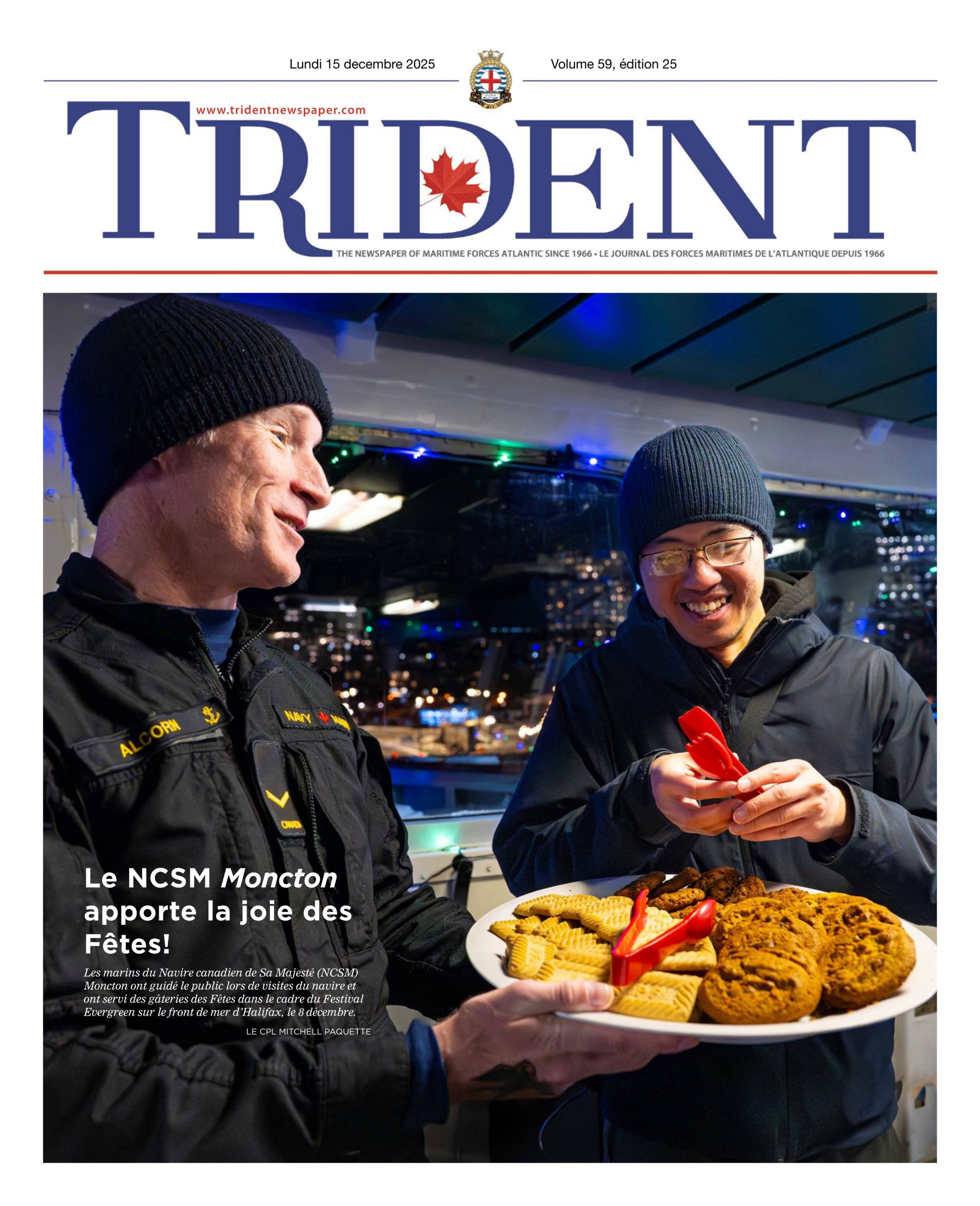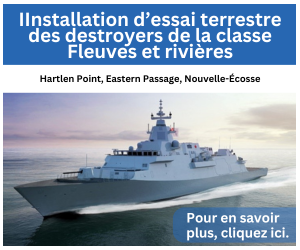
Photo: AB TYLER ANTONEW, FIS HALIFAX
Outgoing CO reflects on nearly four years at CFMWC
Par Ryan Melanson,
L’équipe du Trident
A lot has happened at the Canadian Forces Maritime Warfare Centre since Capt(N) Darren Garnier took command just under four years ago.
They’ve supported the firing of 173 heavyweight torpedoes and 52 lightweight torpedoes of various configurations, 47 SeaSparrow missiles, and six sea-to-shore Harpoon II missiles, with corresponding data collection for each. This was just one example provided by Cmdre Richard Feltham as he attempted to sum up Capt(N) Garnier’s time in command at CFMWC.
The Warfare Centre’s work focuses on the underlying concepts, doctrine and strategies at play during all RCN exercises and operations. It happens in the background, and much of the work is classified, meaning the contributions of the CFMWC, and in turn the contributions of Capt(N) Garnier over the previous three years and 11 months, can sometimes go unrecognized.
“What Capt(N) Garnier has done to advance our tactical development, our bridges with our neighbours, and the force development conceptual underpinnings of the Royal Canadian Navy, has been truly impressive,” Cmdre Feltham said.
“The dedication with which people in this building work to further RCN interests and make ourselves more operationally effective is an impressive today as it has always been.”
Cmdre Feltham, the RCN’s Director General of Naval Force Development, presided over the change of command ceremony at CFMWC on June 18, which saw Capt(N) Garnier hand over command to Capt(N) Jamie Tennant. He described both officers as good friends and highly capable leaders; he served as XO during Capt(N) Garnier’s time in command of HMCS Preserver, and also worked closely with Capt(N) Tennant during his command of HMCS Montreal.
Capt(N) Garnier, who is set to be promoted to Commodore and assume command of Combined Task Force 150, said the CFMWC will benefit from fresh ideas at the helm as the RCN begins looking toward its future fleet, and said he was confident Capt(N) Tennant will help build on the successes of previous years.
He described his experience in command as profoundly humbling, and gave credit to the CFMWC staff, made up of military and civilian employees along with contractors, for keeping the Navy on the cutting edge of doctrine and tactics, modeling and simulation development, and force development for the future.
“I’ve been able to work with most intelligent, bright, devoted and highly motivated people on the business of putting our ships and helicopters to sea, with the best tactics and the best ability to fight against any adversary they might go up against,” Capt(N) Garnier said.
“Without the work that happens here, we just wouldn’t be the Navy that we are.”
And any major milestone for the CFMWC wouldn’t be complete with remembering LCdr John Stubbs, the Commanding Officer of HMCS Athabaskan G07, who died along with 128 others when the ship was torpedoed and sunk in April of 1944 off the coast of France. The CFMWC is housed in the Stubbs building at Stadacona, which is named in his honour.
“He was an incredible, inspirational leader, a young man who went to war and lost his life in the bay of Biscay,” Capt(N) Garnier said.
“We all stand collectively on his shoulder and the shoulders of all those men and women who sacrificed their lives at the various stages of our existence.”
For incoming CO Capt(N) Tennant, recent weeks have been packed with briefings and meetings as he gets up to speed on the business of the Warfare Centre. Despite being new to the building, his background of largely operational or sea training postings makes him familiar with the concepts at play.
“My entire job has been applying and assessing things that were done here at the Warfare Centre, whether it was tactics or doctrine or settings on the CCS,” he said.
“I’m very excited to now be part of that work, and that work is going to keep leading the Navy Forward, just as it’s done in the past.”






